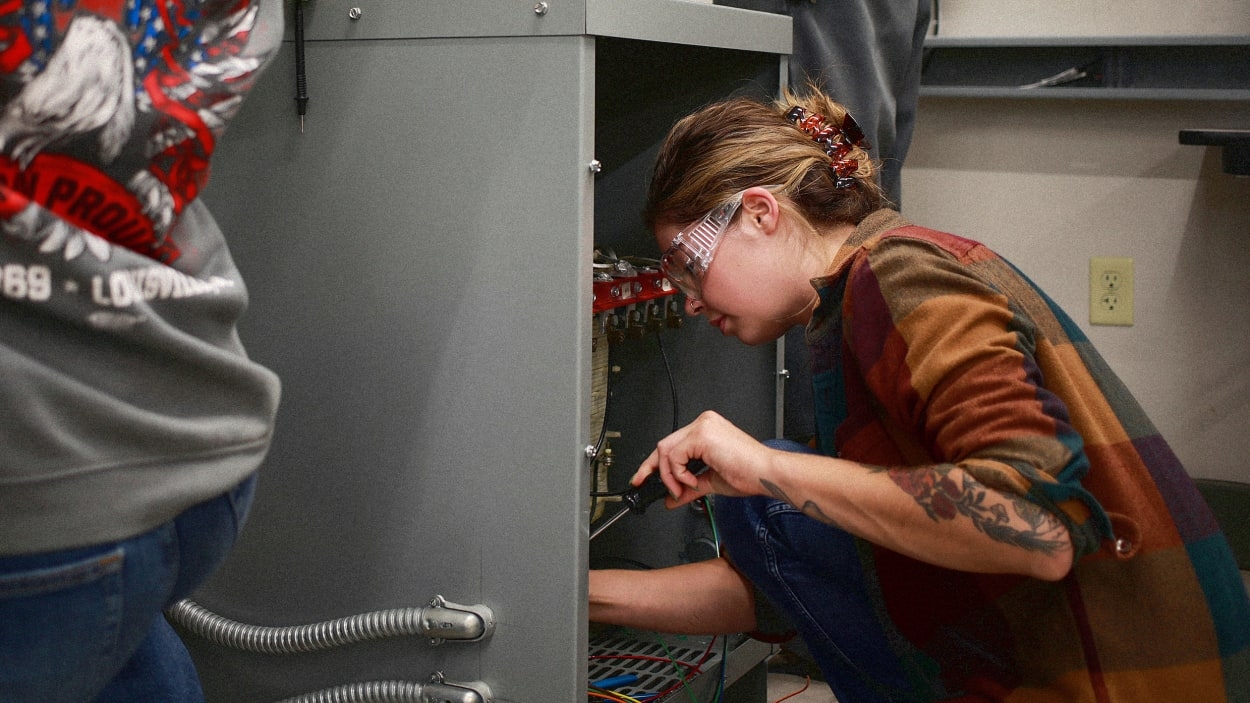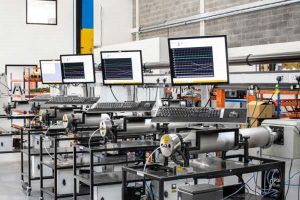When UX designer Bianca Pasternack applied for a design job this spring at a company working on climate change, she got a rejection email saying that they’d had 3,000 applicants. At the same time, she kept hearing about the massive shortage of electricians who are necessary to help the country decarbonize. She started to wonder if she was in the wrong field.
“It just seems like, out of all the work that needs to be done in climate, we do not need 3,000 more UX designers,” she says. “There’s this misalignment, and all this work not getting done.”
Electricians are particularly critical in the climate fight: The shift to clean energy, including everything from heat pumps and induction stoves to solar panels and chargers for electric cars, means that the demand for electrical work is skyrocketing. But as many electricians have reached retirement age—and the number of people entering the field has slowed—there aren’t enough people to do the work.
The nonprofit Rewiring America, with a focus on “electrifying everything,” estimates that the U.S. will need at least 1 million more electricians over the next decade to meet climate goals. Already, homeowners who want to electrify their homes say they’ve considered giving up because it’s so hard to find a professional to do the work. (There are similar shortages in other trades that are critical for climate transition, including construction workers to build things like solar farms.)
Pasternack is in the early stages of considering a career change, and she isn’t alone. Nate Johnson, a former journalist who previously wrote about climate change for the nonprofit news site Grist, left that job last year to train to become an electrician.
“It feels good to be doing something that is unequivocally useful,” he wrote on Twitter at the time. “After years of writing about climate policy in the abstract, it’s unbelievably satisfying to be directly electrifying everything. After so much talking, what a relief to start doing.”
Johnson had other motivations beyond climate. He’d lost the excitement he once felt for journalism, and didn’t want to pivot into something semi-related like marketing. Mid-pandemic, as he started working on some home-improvement projects, it reminded him of how much he liked working with his hands; like most people with a desk job, he was sick of staring at a computer screen. The puzzle-solving nature of electrical work appealed to him.
On job sites, he says it’s common for him to meet people who’ve moved into the trades from other careers. Their motivation usually isn’t climate change, though that may soon change. “It seems like once a week someone will contact me on Twitter and say, ‘This is so inspiring—I want to do this,’” Johnson says.
There’s now a large pool of people who want to change jobs to work directly on climate solutions. Work on Climate, a nonprofit started by a former Google engineer that’s focused on accelerating the climate transition, includes a Slack community that now has more than 22,000 members.
For many people, focusing on climate feels like an inescapable choice. “I don’t have this big lofty mission or deep environmental passion,” says Pasternack. “I like breathing. I like water. I like trees. I like being able to go outside. I don’t want every week to be like last week—I’m in New York City, where we had our first real taste of wildfire smoke. I would like to have a future, and for everyone to have a future. It just seems like the obvious thing to do, like most other things are a waste of time. If we don’t have a livable planet, we don’t have anything.”
Of course, there are a number of roles at climate tech companies or in sustainability. But many people may now start considering work in the trades even if hadn’t occurred to them as an option in the past. (In an interview last year on Ezra Klein’s New York Times podcast, Bill McKibben suggested, “If you know a young person who wants to do something that’s going to help the world and wants to make a good living at the same time, tell them to go become an electrician.”) A master electrician, with around seven years of experience, can make more than $100,000 a year. The work is also likely to be much more resilient to the threat of AI than many office jobs. (These jobs are also strong options for people without college degrees or for those who want to avoid ending up in debt.)
But for those who want to make the shift from another career, it takes time. Requirements vary by state, and the work often requires three years of a paid apprenticeship before someone can get certification. (Because of the overall shortage of people in the field, there’s also a shortage of people who can do the training.) When Johnson began exploring the idea, he started taking vacation days at his former job to work as an apprentice and classes at a community college.
More investment in training programs could help bring more people into the field, including “pre-apprenticeship” programs at community colleges that can help introduce people to a variety of jobs in the trades. “There needs to be an investment in the job training pipeline in order to basically have enough people to do this really critical work for both our health and our climate,” says Alexandria Herr, a research associate at Rewiring America. It’s also important to build more programs that can support people who historically have been excluded from the field, including people of color and women.
Herr suggests that an ad campaign could also help: In Germany, one campaign touts jobs like HVAC installation as “climate protection” work, and helps anyone who’s interested learn more about the careers and connect to local apprenticeships. In the U.S., a similar national push for recruitment doesn’t yet exist.

(8)
Report Post






